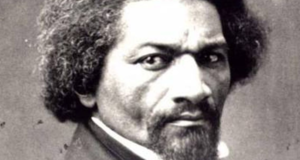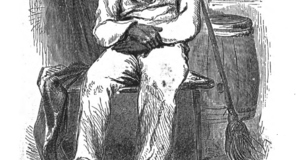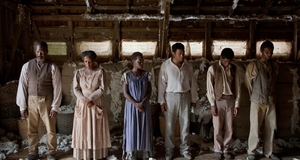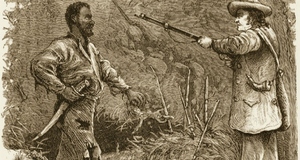Breaking the Cycle: Violence, Control & Resistance in American Slave Narratives
By
2010, Vol. 2 No. 01 | pg. 1/2 | »
KEYWORDS:
In the world of the American slave, violence and control were intimately connected. As Frederick Douglass notes, “Men are whipped oftenest who are whipped easiest,” a sentiment that points to the cyclical nature of violence against the enslaved. The lash, cane or raised hand was meant to produce docility in the slave and this desire for control promoted endless iterations of violence. Abuse, as Douglass observed, only begot further and more severe abuse, in an endless pattern of brutality. Yet Douglass’s conception of violence contains additional significance, offering the possibility for resistance and suggesting that those who lift themselves up from degradation and endure are less likely to be the victims of violence. The ubiquity and severity of violence in slavery is something that is represented in a great variety of slave narratives. Though many of these narratives served to promote awareness of the inherent brutality of slavery, this was not their only function; representations of violence also allowed slave narratives to evaluate how violence destroyed both master and slave and to explore the various forms of resistance that might render violent oppression ineffective. 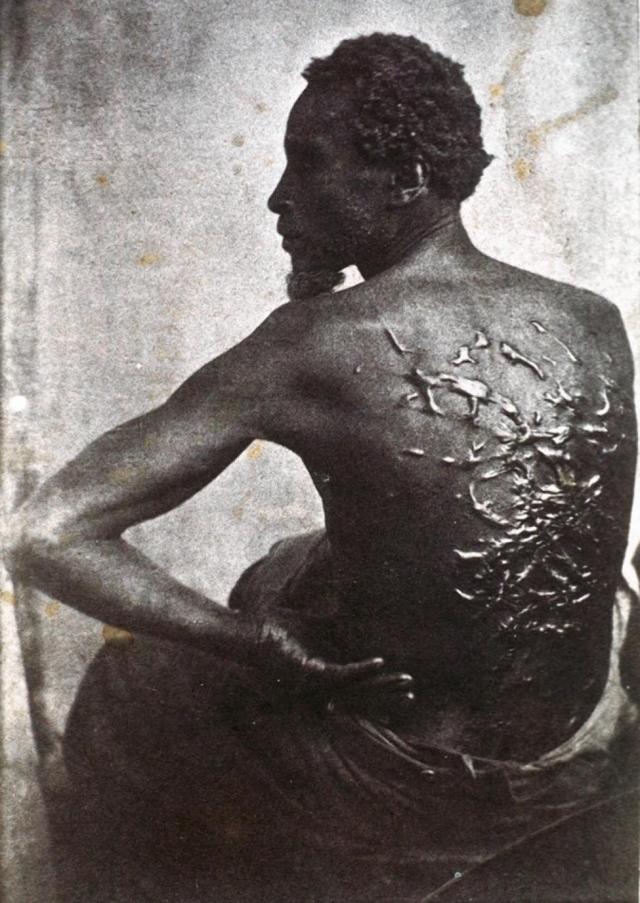 Acts of violence are understandably common in narratives of the American slave, both acts of cruelty and intimidation perpetrated the master and acts of triumph and revenge carried out by the slave. Though the narratives themselves are incredibly varied, commonalities exist in how violence is depicted as both a means of oppression and of liberation. Violence and the threat of violence are represented as a means of breaking the slave’s spirit, promoting total control, and objectifying the slave. Yet many narratives also portray how violence comes to control both slave and master in an endless cycle of degradation and cruelty. In the hands of the slave however, the use of force or refusal to surrender to the threat of violence becomes an assertion of agency and free will. Through non-violent acts of defiance, violent assertions of agency and desperate acts of self-destruction, slave narratives explore the possibility of triumphing over violence as a tool of oppression. Acts of violence are understandably common in narratives of the American slave, both acts of cruelty and intimidation perpetrated the master and acts of triumph and revenge carried out by the slave. Though the narratives themselves are incredibly varied, commonalities exist in how violence is depicted as both a means of oppression and of liberation. Violence and the threat of violence are represented as a means of breaking the slave’s spirit, promoting total control, and objectifying the slave. Yet many narratives also portray how violence comes to control both slave and master in an endless cycle of degradation and cruelty. In the hands of the slave however, the use of force or refusal to surrender to the threat of violence becomes an assertion of agency and free will. Through non-violent acts of defiance, violent assertions of agency and desperate acts of self-destruction, slave narratives explore the possibility of triumphing over violence as a tool of oppression.
The pattern of violence as a means of oppression is one that has been a persistent characteristic of slavery and one that continues to exist to this very day. In To Plead Our Own Cause, Kevin Bales and Zoe Trodd argue that violence or the threat of violence is an integral and enduring element of slavery. “Across all these forms [of slavery],” they write, “slavery’s core attributes remain the same as they have always been: slavery is still a social and economic relationship in which a person is controlled through violence or its threat, paid nothing, and economically exploited.”2 Violence is thus recognized not as a side effect or adjunct of slavery but as an intrinsic aspect of bondage. Slavery depends on the use of violence for its very existence. Indeed, Trodd and Bales define the “essence of slavery” as “controlling people through violence and using them to make money.”3 The numerous modern slave narratives that Trodd and Bales present bear this observation out. Christine Stark, who survived sex slavery in the United States, recounts the shocking brutality that was used to control her: These men gang rape us. They rape us with dogs. They rape us with knives and guns and beer bottles. They tie us down, chain us to bedposts and basement poles and each other… These men want us… to feel responsible for their actions… They want us to feel utterly powerless to stop them… They want to consume our lives, take our freedom with no resistance whatsoever.4 Here Christine discusses the incredible horrors of her experience in sexual slavery; this disquieting imagery reveals how violence is used as a form of total objectification. In Stark’s eyes, the goal of her masters is to deprive her of any feelings of control or desire to resist. In her case, violence is not just a part of the sadomasochistic fantasies of her masters but a willful effort to manipulate her, turn her against her “sisters,” and keep her in a state of hopeless degradation and self-loathing. Violence, as it is employed by her captors, represents a debasing and divisive influence integral to maintaining captives in a state of slavery. The use of violence designed to objectify the slave and keep him or her in a state of hopelessness and despair can also be observed in the narratives of those who suffered under the yoke of legal slavery in the American South. In his “Appeal to the Colored Citizens of the World,” David Walker makes the connection between violent oppression and ignorance, arguing that force is used in order to deprive the slave of all knowledge of their rights and of God. According to Walker, slaves are kept in an abject state of “death-like ignorance” in order to degrade their spirits and maintain their status as pieces of property: "First, no trifling portion of them will beat us nearly to death, if they find us on our knees praying to God… they keep us sunk in ignorance… If they find us with a book of any description in our hand, they will beat us nearly to death--they are so afraid we will learn to read, and enlighten our dark and benighted minds… They keep us in the most death-like ignorance by keeping us from all source of information, and call us, who are free men and next to the Angels of God, their property!!!!!!"5 Violence was thus frequently used with the goal of preventing the slave from gaining any sort of agency, whether it be religious or intellectual. Beatings were meant to discourage learning, literacy and piety; violence was used by those with knowledge to keep those without it in a state of wretched ignorance. Walker thus represents violence as a tool of the master, used to separate the slave from tools of empowerment: namely, religion and education. The use of violence to prevent education and empowerment is evident in Harriet Wilson’s autobiographical novel Our Nig. Wilson recounts how her mistress, Mrs. Belmont, forbade her to attend church or read the Bible. “Next morning [Mrs. Belmont] told Frado she ‘should not go out of the house for one while, except on errands; and if she did not stop trying to be religious, she would whip her to death."6 Through threat of violence, Mrs. Belmont attempts to deprive Frado of any religious education, an activity in which Frado might find solace, contentment or even empowerment. Mrs. Belmont uses the whippings and the threat of whippings to keep Frado within her sphere of influence. The knowledge that Frado could gain outside of the Belmont’s home represents a threat to Mrs. Belmont’s absolute authority and thus she employs violence and intimidation in order to continue controlling Frado completely. Wilson’s account of her life as an indentured servitude is especially significant given that she was not technically enslaved. Despite this, the degree to which she is exploited through physical violence and verbal abuse certainly makes her, according to Bales and Trodd’s definition, a slave. The manner in which Frado is degraded and controlled demonstrates the degree to which violence is an innate aspect of bondage. Even though she is not a slave by law, she becomes one through the abuse and manipulation of her mistress and the constant, paralyzing threat of violence. Frederick Douglass describes a similar process of brutal oppression in his “Narrative of the Life of Frederick Douglass, an American Slave.” As a young man, Douglass is sent to live with Mr. Covey, a man with a reputation for being a “nigger-breaker” and whose cruel whippings become a recurrent aspect of Douglass’s life. “I had been at my new home but one week,” Douglas recalls, “before Mr. Covey gave me a very severe whipping, cutting my back, causing the blood to run, and raising ridges on my flesh as large as my little finger.”7 Given the brutality and frequency with which he was whipped, it is no wonder that Douglass characterizes this point in his life as the one at which he “was made to drink the bitterest drags of slavery.”8 Over the course of his time with Mr. Covey, Douglass, through the brutal work and the violent whippings imposed by his master, becomes truly broken, deprived of any sense of hope or intellectual curiosity. The cruelty that he is subjected to causes him to become despondent, in his words, transformed from man to “brute.” This is similar to the state of despondency the Christine Stark describes, an existence in which the slave is literally sapped of the ability to resist or better their situation in any way. Walker, Wilson, Douglass and Stark all depict violence as a tool used to keep down the slave. Though these descriptions demonstrate the grotesque brutality inherent to the practice of slavery, they also reveal how those in control are beholden to the use of violence for the maintenance of power. As is indicated by these various accounts, masters were able to maintain control by using violence as a tool to keep slaves powerless and dehumanized. Yet this practice of control through violence came with a psychological price: the fear of retribution. Slave narratives often represent how violence comes to destroy the master, inflicting psychological damage and making those in power fearful and depraved. We see this in both Our Nig and Frederick Douglass’s narrative, in which acts of defiance render the master suddenly powerless. Mr. Covey, the callous “nigger-breaker,” “tremble[s] like a leaf,” when Douglass unexpectedly fights back. Douglass finds “assurance” in this display of fear and continues to do battle with Mr. Covey though he has no hope of ultimately winning. Perhaps the most salient example of how fear of violence can be used to control the master is represented in “The Confessions of Nat Turner.” Turner, who led an infamous and bloody slave insurrection in 1831, offers his confession to Thomas Gray yet also sows the seeds of fear in the minds of his audience. In attempting to extract information on other rebellions, Thomas Gray assures Turner that “certain death” awaits him and threatens “destruction on the innocent as well as the guilty” if Turner does not divulge all knowledge of planned slave revolts.9 Yet Turner responds in a manner calculated to produce only more fear of retribution. “I see sir, you doubt my word,” Turner says, “but can you not think the same ideas, and strange appearances about this time in the heaven’s might prompt others, as well as myself, to this undertaking.”10 With these words, Turner, though facing death, suggests the terrifying prospect of other slave revolts and thus establishes a position of power over his white audience. Through his confession, Turner reverses the power dynamic and proves the power of violence or its threat to upend a system supported by violence. Given examples of slave insurrection such as Nat Turner’s rebellion, the master comes to fear violence as a means of retribution and thus become controlled by their own system of oppression. Likewise, individual acts of violence are sometimes depicted as assertions of strength and free will when the slaves themselves carry them out. Frederick Douglass defines a particularly moment of violence as “the turning point in [his] career as a slave.”11 That an act of violent defiance could begin the path to freedom it is indicative of the degree to which violence is intertwined with power dynamics. A physical confrontation with Mr. Covey gives Douglass the opportunity to break the cycle of violence that has left him wretched and downtrodden. One day, as Douglass goes about his chores, Covey sets upon him with a rope, intent on restraining Douglass and likely beating or whipping him. Yet to Covey’s surprise, Douglass fights back and they battle for “nearly two hours.” Douglass emerges from this experience feeling newly powerful and independent. “He only can understand the deep satisfaction which I experienced, who has himself propelled by force the bloody arm of slavery.”12 This sentiment implies that there is something deeply enabling and inherently satisfying about combating the violence of slavery with violence. To break this cycle of violence by one’s own hand represents a powerful assertion of both masculinity and free will. In addition, it links Douglass with others who have experienced such satisfaction. To Frederick Douglass, there is something more potent in forms of violent resistance. By fighting Mr. Covey he achieves a degree of freedom (at least freedom from violence). “I now resolved,” he writes, “that, however long I might remain a slave in form, the day had passed forever when I could be a slave in fact.”13Continued on Next Page » Suggested Reading from Inquiries Journal
Inquiries Journal provides undergraduate and graduate students around the world a platform for the wide dissemination of academic work over a range of core disciplines. Representing the work of students from hundreds of institutions around the globe, Inquiries Journal's large database of academic articles is completely free. Learn more | Blog | Submit Latest in History |








